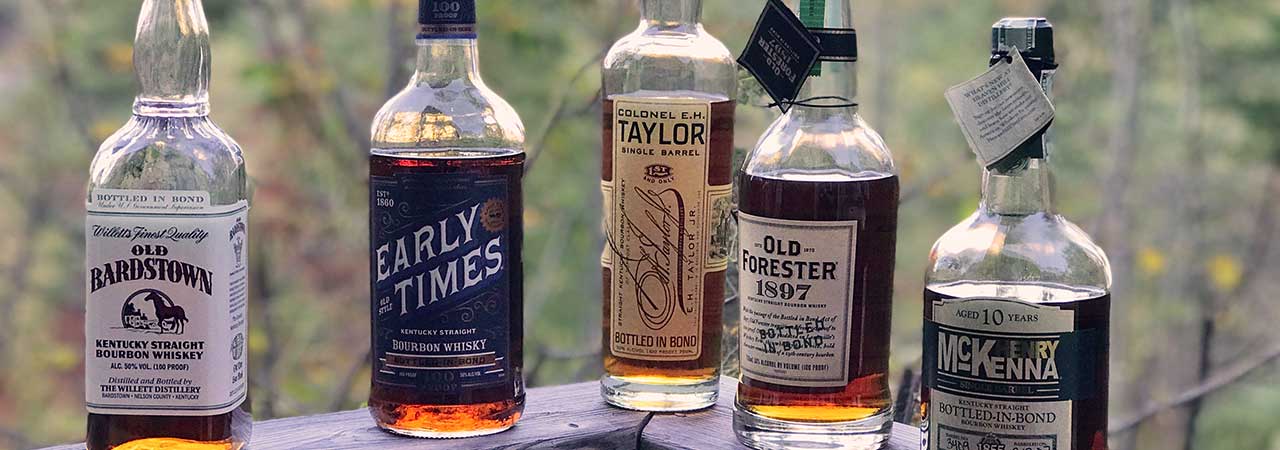100 Proof Bonded Weekend: A BIB Blind Tasting
It’s that time of year again. My annual guy’s weekend in the mountains of western North Carolina. If you read my post from last year, you may recall that a few of my buddies from Louisville and I make our way to Tuckasegee, N.C. each year for a weekend of bourbon, football, and grilling.

It’s that time of year again. My annual guy’s weekend in the mountains of western North Carolina. If you read my post from last year, you may recall that a few of my buddies from Louisville and I make our way to Tuckasegee, N.C. each year for a weekend of bourbon, football, and grilling of dead animals.
Every year I pick a theme for our blind tasting (last year was non-KY bourbon), and this year’s selections were exclusively Bottled-In-Bond.
A brief reminder of what it means to be BiB as set forth by the Bottled in Bond act of 1897:
- 100 proof
- Aged a minimum of 4 years in a federally bonded warehouse.
- Come from one distiller; from one distilling seasons (Jan-June or July-Dec).
- Identify the name of the distillery in which it was produced.
Like many others, I feel that the best way to see what your senses genuinely like is to sample various juices with little to no idea what brand you are tasting. When preconceived notions and label reputations are removed, it is much easier, to be honest with yourself.
Each of the five attendees brought a bottled-in-bond bourbon to the event (the idea was to donate something reasonably priced and generally available on the shelves) making sure to keep its label anonymous from the other participants; I was informed of the selections ahead of the trip in order to prevent doubling up on the same bottle. Each bottle was placed in a brown paper bag, shuffled around, and then each bag was labeled 1-5. Each participant received five tasting glasses so the samples could be compared side by side and revisited if desired. Water was provided both as a palate cleanser and made available in case the taster wanted to add a few drops to his bourbon.
Along with each sample, a scoring/note taking mat was provided that allowed for the assignment of allotted points: appearance (10), nose (20), mouth (25), and finish (25). Each sample would be assigned a score out of 80 total points.
Meet the Bottled-in-Bond contenders (in alphabetical order):
- Col. EH Taylor Single Barrel (Buffalo Trace)
- Early Times (Brown-Forman)
- Henry McKenna (Heaven Hill)
- Old Bardstown (Willett)
- Old Forester 1897 (Brown-Forman)
The five members of the tasting panel bring to the proverbial table various levels of bourbon appreciation ranging from “I finish a bottle before I buy a new one” to “hook up the I.V. bag” so the expected outcome would be as varied as the fellas participating. So, when all was said and done, notes made, and scores recorded here is how things shook out:
The contested spot for #1 went to EH Taylor and Henry McKenna. Taylor received three first-place votes and two-second place votes. McKenna notched two first-place votes, two second-place votes, and one third-place vote. The consensus for third and fourth place was OF 1897 3rd and ET 4th; 1897 did receive a 2nd place nod. The only unanimous result was that Old Bardstown was D.F.L. – receiving five last-place votes.
For me, I wouldn’t say I was surprised by the final results. I had EH Taylor and McKenna 1 & 2 – only separated by a single point, Early Times and OF 1897 a close 3 & 4, and Old Bardstown struggling to get across the finish line. A quick side note, it was the first time I tried the BiB expressions of Early Times and Old Bardstown.
Another interesting takeaway from the results is that when comparing the overwhelming top two finishers, for the harder to acquire $80+ bottle of EH Taylor, I can easily get three bottles of Henry McKenna, which makes you stop and question the absurdity of higher prices and marketing hype.
Let me know what your favorite Bottled-in-Bond is in the comments.
